Ben Kelly Design behind Museum of London’s Cheapside Hoard
Ben Kelly Design has worked on exhibition design for the Museum of London’s new Cheapside Hoard: London’s Lost Jewels exhibition.
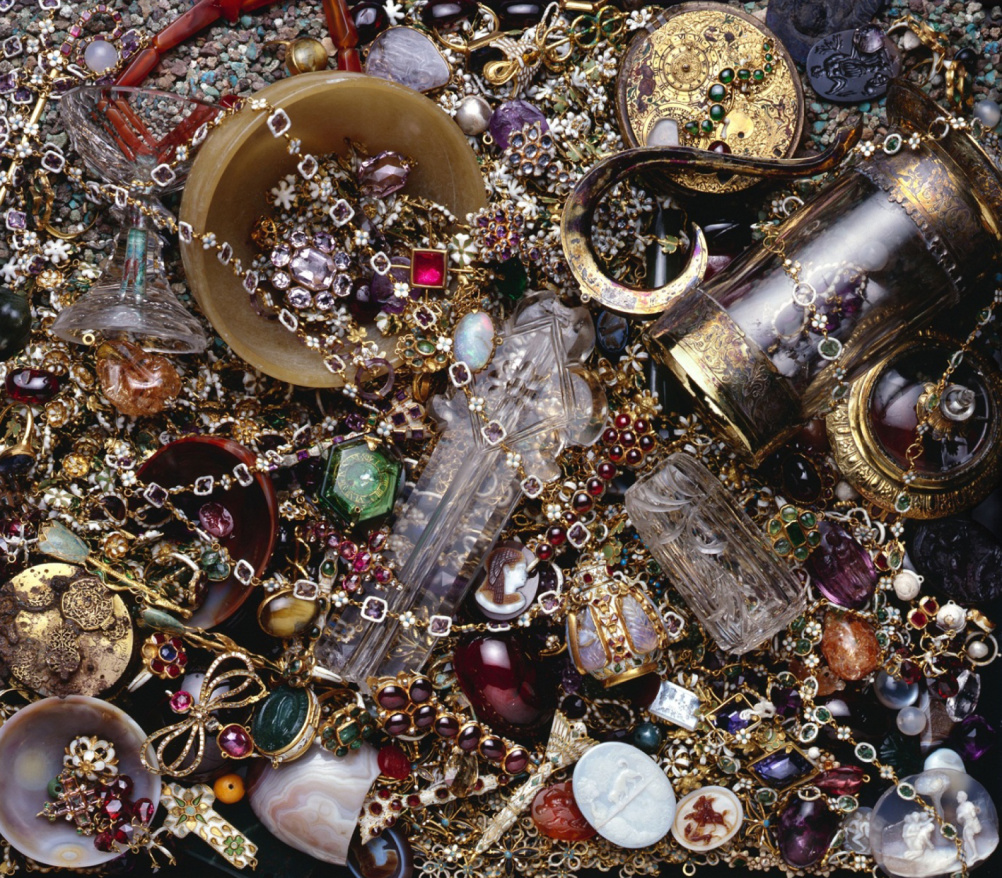
The Cheapside Hoard was a discovery made in 1912 of around 500 pieces of priceless 16th and 17th century jewelry.
BKD’s design places the hoard at the centre of the exhibition, with what it calls ‘a layered landscape of clustered cases.’
Supporting content radiates outwards and the hoard’s stories are revealed as the visitor progresses through the exhibition. Wall structures have been erected to control circulation and this offer glimpses of the hoard on approach.
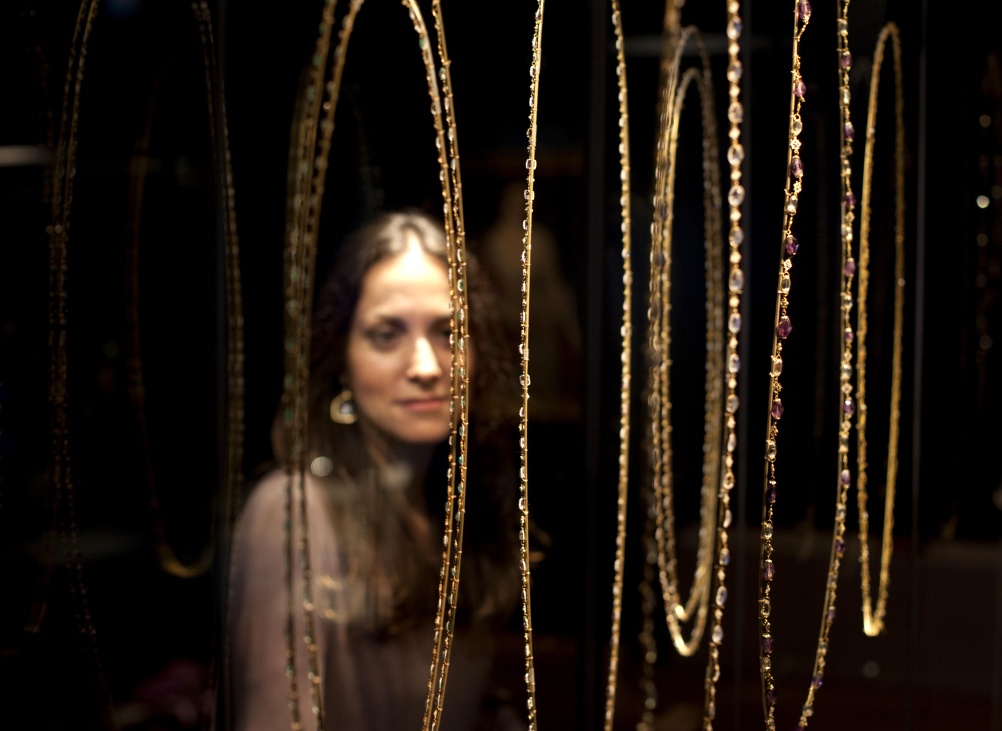
An ‘atmospheric installation’ communicates the story of discovering the hoard, which was found by workmen breaking through a floor and into a buried cellar.
It reflects ‘the wonder and visual spectacle of the discovery made by workmen,’ says BKD.
This installation is made up of ‘exploded sections’ of charred wood, suspended in space with an abstract image of the hoard projected onto the fractured surfaces.
The Museum of London says that the Cheapside Hoard tells the story of ‘dodgy jewelers, fraud, foul-play and murder on the high seas’.

The museum has identified that two of the gemstones from the hoard had been faked by 17th century jeweler Thomas Sympson.
BKD says it has looked to tell this story and others as a way of presenting the context of the hoard.
‘The language of the timber is carried through this section, taking the form of large stained cedar panels that clad the walls,’ according to BKD. This is juxtaposed with a palette of the period the jewels date from.
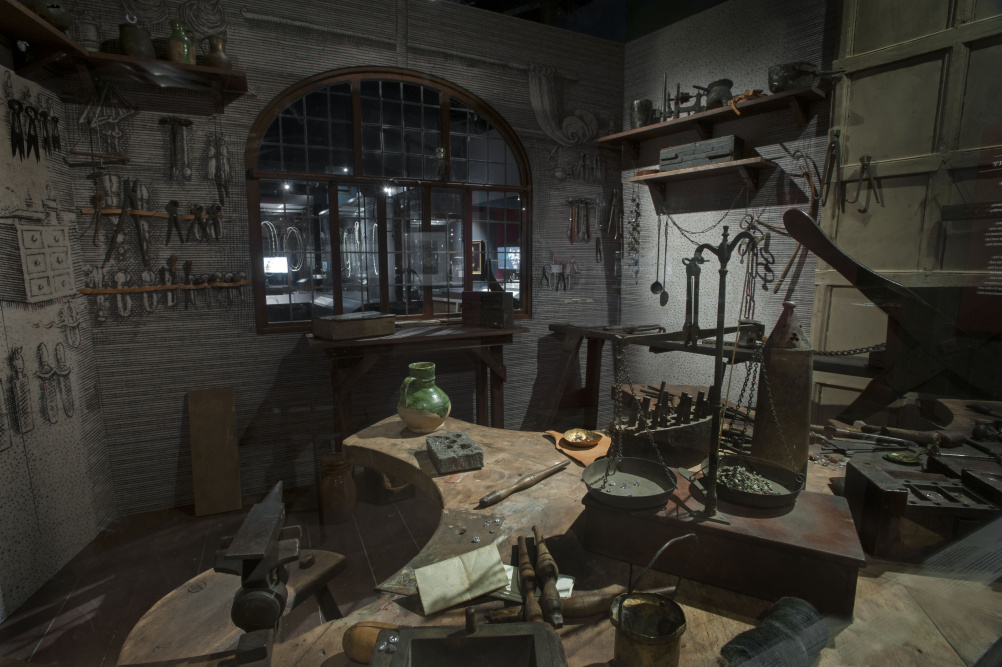
At this juncture visitors will find a timber structure presenting a jeweler and goldsmiths’ workshop complete with tools and workbenches. A shop window at the back allows them to perceive the hoard.
As visitors are introduced to the clustered display cases they break away from the prescribed route and are free to wander.
Relevant historical paintings and AV content hangs next to the clustered cases on adjacent walls.
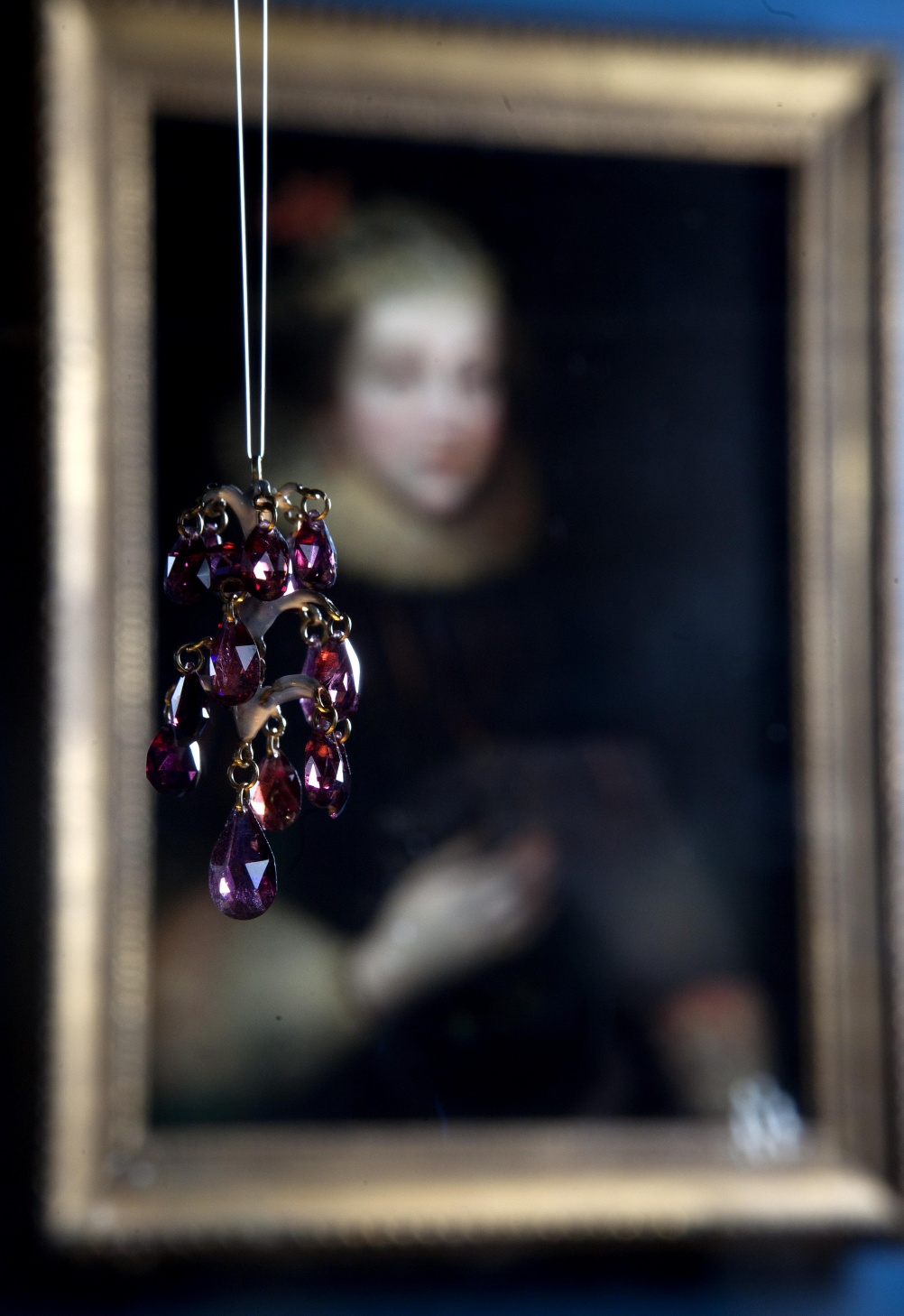
BKD says, ‘Relationships between objects, stories and histories are forged, reflecting the richness and diversity of the collection.’
BKD has worked with lighting designers Studio ZNA and has developed what it calls ‘sensitive display solutions’ to present the jewels in the way they would have originally been worn.
Some have been suspended on nylon wire or elevated on stalks so they appear to ‘float’.
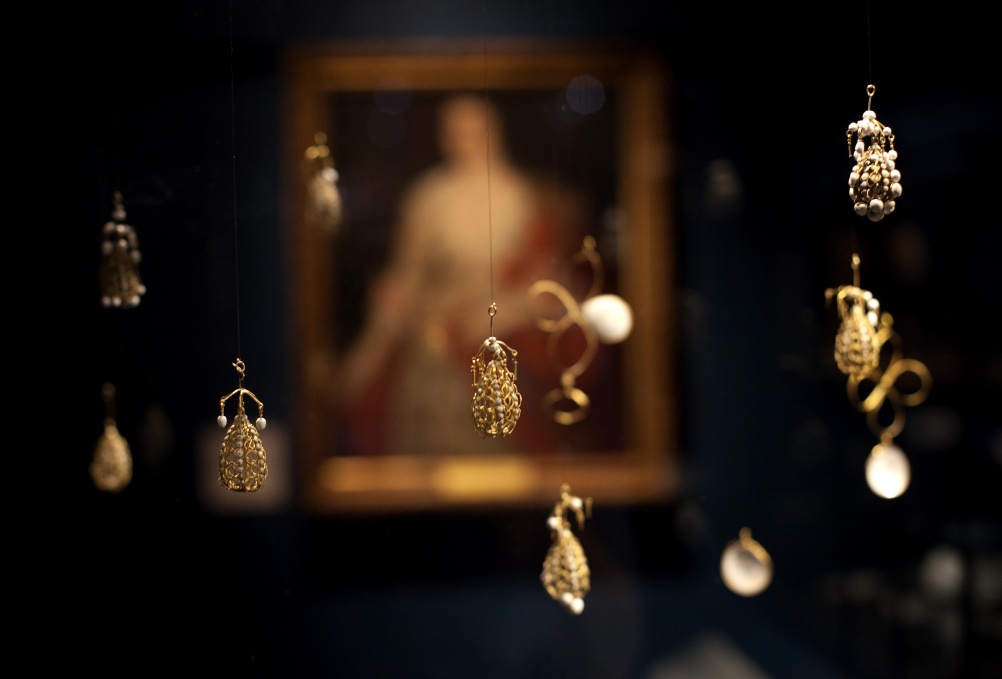
BKD says, ‘Layers of jewels can be viewed together rather than in isolated groups, with the delicacy of the systems allowing a visual transparency through the space to be maintained.’
The exhibition also attempts to speculate on the questions that still remain – who owned the hoard, why was it hidden and why was it never reclaimed?
Hazel Forsyth, exhibition curator says, ‘The 16th and 17th century jewelry trade was clandestine by its very nature and skullduggery was rife.’
-
Post a comment




